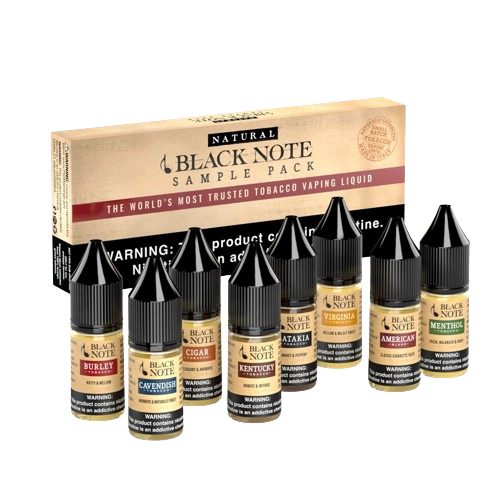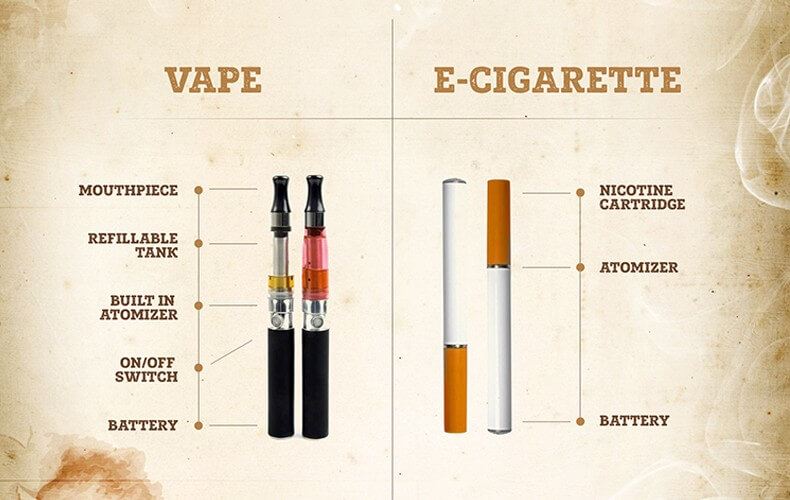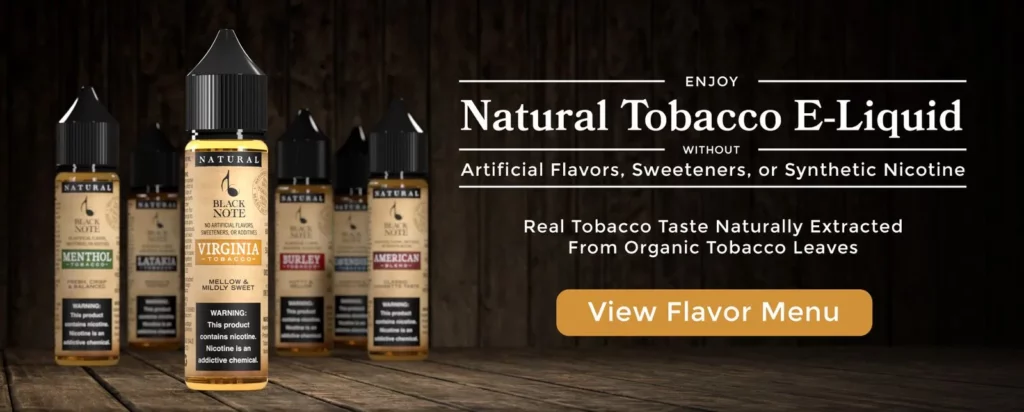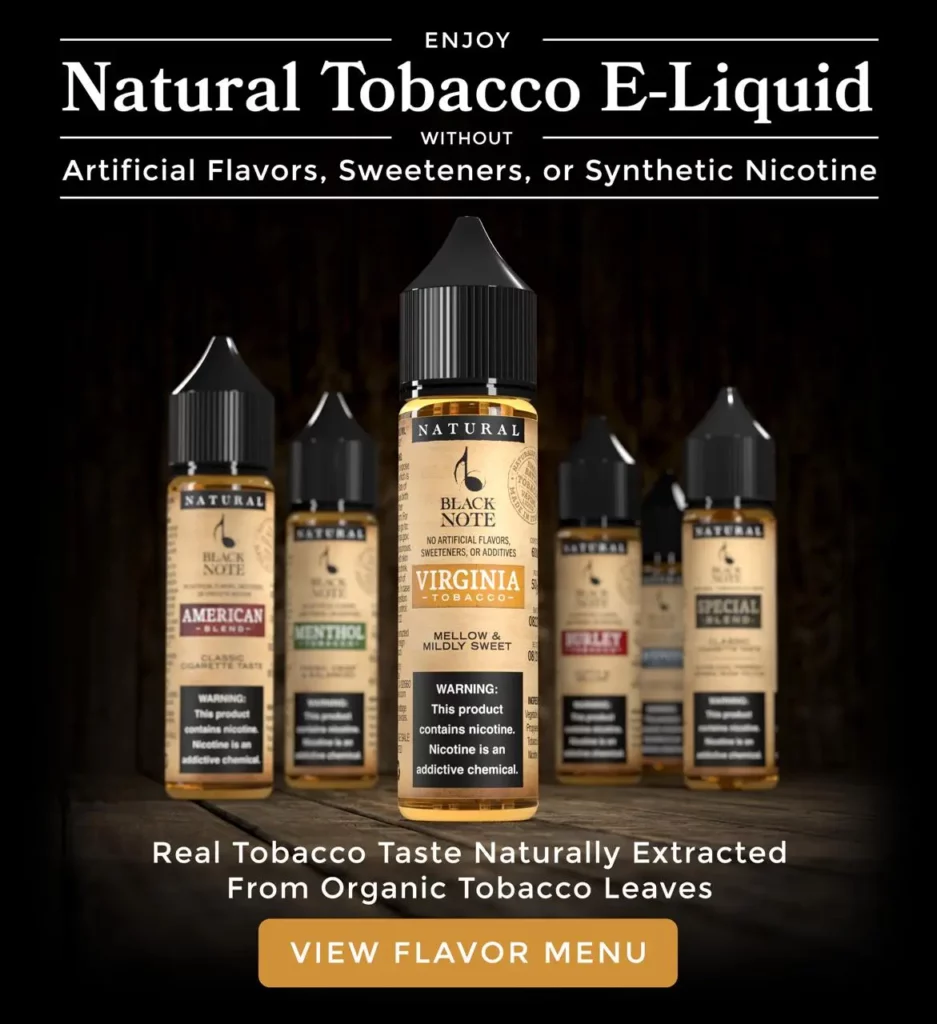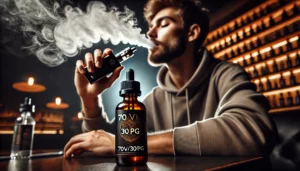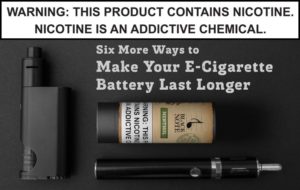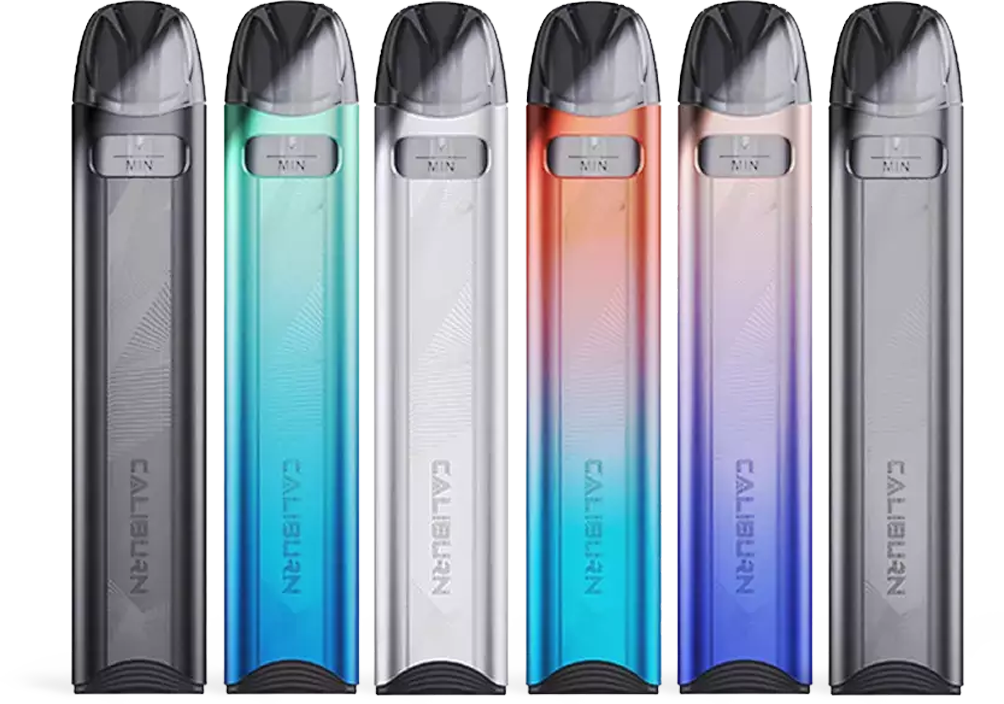What is Vaping?

We all know what a cigarette is: a paper tube filled with ground tobacco, typically with a filter placed on one end. However, many people need to be aware of vapers’ precise mechanism. This has caused a lot of confusion because many individuals believe that an e-cigarette is a modernized version of a conventional tobacco product when they hear the term “cigarette.” Nothing could be further from the truth.
Vaping has become an increasingly popular alternative to smoking, with millions of users worldwide. While some see it as a harm reduction tool, others worry about its potential health risks. But what exactly is vaping? How does it work? And is it truly safer than traditional cigarettes?
To replace cigarettes, electronic cigarettes were created. They accomplish the same task; delivering inhaled nicotine, but in a very different manner.
What is vaping exactly?
Vaping is the inhalation of vaporized e-liquid through a battery-powered device. Unlike traditional cigarettes, which burn tobacco to produce smoke, vaping devices heat e-liquid to create an aerosol (vapor) that is inhaled.
Vaping devices are typically battery-powered. They could have detachable parts. Vaping products go by a variety of names, including:
- vapes
- mods
- sub-ohms
- e-hookahs
- vape pens
- tank systems
- electronic nicotine delivery systems
- e-cigarettes/electronic cigarettes
The devices may also be referred to by different brand names.
How Does Vaping Work?
All vaping devices operate on the same basic principle:
- A battery powers the device.
- The coil (heating element) warms up the e-liquid.
- The e-liquid turns into vapor.
- The user inhales the vapor through the mouthpiece.
The e-liquid inside a vape device usually contains a combination of propylene glycol (PG), vegetable glycerin (VG), nicotine, and flavorings. Some e-liquids are nicotine-free, while others use nicotine salts for a smoother throat hit.
The majority of vaping devices use battery power to heat a vape liquid. The solution vaporizes as a result of the heat. The vapor then condenses to an aerosol, which the user breathes in through the mouthpiece.
Vaping devices also come in a variety of shapes and sizes. Some are tiny and resemble pens or USB drives, whereas others are significantly larger.
The devices are classified into two types:
- Open, which implies they can be restocked
- Closed, which means that either the entire product or the portion containing the vaping substances cannot be refilled
Types of Vaping Devices
Vaping technology has evolved over the years, offering users different types of devices depending on their experience level and preferences.
1. Cigalikes
- Appearance: Small, cigarette-like devices.
- Usage: Disposable or rechargeable with limited battery life.
- Best for: Beginners or smokers transitioning to vaping.
2. Vape Pens
- Appearance: Slim, pen-shaped devices with refillable tanks.
- Usage: Simple operation with button or draw-activated inhaling.
- Best for: Beginners looking for a reusable device.
3. Pod Systems
- Appearance: Compact, sleek, and modern.
- Usage: Uses pre-filled or refillable pods. Often uses nicotine salts for higher nicotine satisfaction.
- Best for: Ex-smokers looking for a cigarette-like experience.
4. Box Mods & Sub-Ohm Tanks
- Appearance: Large, customizable, with powerful batteries.
- Usage: Adjustable wattage and temperature control. Designed for Direct-to-Lung (DTL) vaping.
- Best for: Advanced vapers who enjoy large vapor clouds and intense flavors.
Each of these devices offers a different vaping experience, catering to both beginners and experienced users.
PREMIUM TOBACCO E-LIQUIDS
Authentic Flavors, Unmatched Quality
Step into Black Note's world and explore a premium selection of natural tobacco e-liquids. Crafted for the discerning smoker and vaper.
What exactly is in a vape?
Vape juice is a particular kind of cartridge-loaded vaporizable liquid. People consider propylene glycol (PG) and vegetable glycerin (VG), the two most frequently used ingredients in vape juice, to be safe for inhalation.
The most frequently used nicotine carrier oils are PG and VG. Nicotine doesn’t vape well on its own because it ends up taking on a crystalline form as opposed to an oil one. However, nicotine diffuses into VG and PG, allowing for the vaporization of this tobacco component.
Vape juice may contain a variety of artificial and natural flavorings. Some vape juice products contain MCT oil, a derivative of coconut oil, which has been linked to a severe situation known as lipoid pneumonia. Only PG and VG are regarded as safe nicotine carrier oils.
Vape juice and concentrate are not the same thing, and dab pens and vape pens are not the same thing either. Dab pens are similar to vape pens in that they are designed to vaporize concentrates rather than vape juice. However, a concentrate is a form of purified cannabis or hemp product.
How do vapes function?
In order for a substance to vaporize, it must be heated to its boiling point. Boiling liquids and oils produce vapor, which you may breathe in. Vaporizers do not, however, heat materials to the point at which they burn.
You can vaporize natural oil-producing plants like hemp. For plants like tobacco, active components must first be extracted and mixed with carrier oils due to their difficult vaporization.
Vaping vs. Smoking: How Do They Compare?
Nicotine is delivered by both smoking and vaping. The difference between vaping and smoking is that while vaping can deliver nicotine through the much less harmful process of heating a liquid, smoking serves up nicotine by burning tobacco. This can result in smoking-related ailments.
Traditional cigarettes contain over 7,000 chemicals, many of which are toxic and carcinogenic. The combustion process releases harmful substances like:
- Tar – A sticky residue that damages the lungs.
- Carbon monoxide – A poisonous gas that reduces oxygen levels in the blood.
- Formaldehyde, arsenic, and benzene – Known carcinogens linked to cancer and respiratory diseases.
In vaping, your chosen e-liquid strength and vaping technique determine the nicotine quantity, unlike in cigarettes where the nicotine content is fixed and intake varies based on smoking habits.
The two also differ in terms of costs. The two also differ in terms of costs. The annual cost of smoking 20 cigarettes a day could reach $9,000. The annual cost of vaping could be $900.
| Factor | Cigarettes | Vaping |
| Chemical Content | 7,000+ toxic chemicals | Fewer chemicals, mainly PG, VG, and nicotine |
| Smoke vs. Vapor | Produces smoke and tar | Produces vapor, no tar |
| Nicotine Delivery | Fast absorption | Slower, but can be similar with nicotine salts |
| Health Impact | High risk of lung disease, cancer, and cardiovascular issues | Potential respiratory effects, but lower toxic exposure |
| Odor & Staining | Strong smell, stains teeth and walls | Minimal odor, no staining |
While vaping is generally considered less harmful than smoking, it is not completely risk-free, which is why choosing the right e-liquids and vaping responsibly is essential.
Is vaping worse than cigarettes?
The safety of vaping can depend on a number of different things. While there are health benefits to vaping over smoking, the majority of vape juices contain nicotine, which can be bad for your heart. The components of vape juice can also affect how safe vaping is.
Delicate organs like your lungs were originally designed to process only air. Vapor is an upgrade over smoke because it only consists of vaporized oils and water and doesn’t contain the variety of plant particles as well as other substances that belong in smoke.
Since vape juice often aims to mimic smoking sensations, it usually contains significant nicotine amounts. Vape juice contains varying amounts of nicotine, and nicotine-free vape juice is also available for purchase.
Whether consumed through cigars, cigarettes, nicotine gum, chewing tobacco, or vape juice, nicotine can negatively impact health. So you might want to select a nicotine-free option if you desire a vape juice that is absolutely safe.
You should also examine the ingredients in your vape juice to make sure that it is safe. Avoid using potentially hazardous vape juice ingredients like MCT oil because only PG and VG are safe to use in e-liquid.
Vitamin E acetate is one potentially harmful ingredient that is particularly important to watch out for. This dangerous additive is more prevalent in cannabis-infused vape juice than in nicotine- or nicotine-free vape juice. However, it’s crucial to carefully examine the ingredients in the vape juice to ensure that you’re only inhaling things that you should be inhaling.
What vaping do to your body?
There’s a significant buzz about vaping’s effects on your body. They include:
Many smokers turn to vaping as a way to reduce their tobacco consumption or quit smoking altogether. Some potential benefits include:
- Reduced exposure to harmful chemicals – Vaping eliminates the combustion process, which is responsible for most of the toxic compounds in cigarette smoke.
- Less harmful to bystanders – Secondhand vapor is significantly less toxic than cigarette smoke, making vaping a more socially acceptable alternative.
- Variety of nicotine strengths – E-liquids come in different nicotine levels, allowing users to gradually reduce their nicotine intake.
- No tar or carbon monoxide – These two components are the primary causes of smoking-related lung disease and heart issues, and they are absent in vaping.
- More affordable than smoking – While the initial cost of a vape device may be higher, refilling e-liquids is generally cheaper than buying cigarettes in the long run.
Potential Risks and Concerns of Vaping
While vaping presents fewer health risks than smoking, it is not entirely without concerns. Some of the main risks include:
- Nicotine addiction – Many e-liquids contain nicotine, which is highly addictive and can lead to dependency.
- Potential lung irritation – Some vapers experience dry throat, coughing, or irritation, especially if using high PG-based e-liquids.
- Unregulated vape products – Low-quality or counterfeit e-liquids may contain harmful additives, such as diacetyl or heavy metals.
- Long-term health effects still unclear – Since vaping is relatively new, there is still ongoing research into its long-term effects on the body.
To minimize risks, always choose high-quality e-liquids from reputable brands, avoid excessive nicotine intake, and use well-regulated vaping devices.
Choosing the Right E-Liquid for a Safer Vaping Experience
When selecting an e-liquid, it’s important to consider:
- Nicotine Strength: Choose based on your needs (higher for ex-smokers, lower for light users).
- PG/VG Ratio: Higher VG for smoother vapor, higher PG for stronger throat hit.
- Ingredients: Avoid e-liquids with artificial sweeteners, diacetyl, and unnecessary additives.
VAPE GUIDE
New to Vaping or Black Note?
Whether you're transitioning from smoking to vaping or seeking an upgrade to natural tobacco e-liquids, Black Note has you covered. Our quick, 15-second quiz and comprehensive guide are tailored to help both smokers and current vapers discover their ideal natural vaping alternatives.
Why Black Note E-Liquids Stand Out
Black Note specializes in naturally extracted tobacco (NET) e-liquids, free from:
- Artificial flavorings
- Diacetyl, sweeteners, and harmful chemicals
- Synthetic additives that can cause coil gunk buildup
Their premium tobacco blends offer a clean, authentic vaping experience, making them ideal for those seeking a safer alternative.
FAQ’s
Is vaping the same as smoking?
No, vaping and smoking are fundamentally different. Smoking involves the combustion of tobacco, which releases thousands of harmful chemicals, tar, and carbon monoxide—substances that contribute to lung disease, cancer, and heart conditions.
Vaping, on the other hand, heats a liquid (vape juice or e-liquid) to produce an aerosol (vapor), eliminating combustion and reducing exposure to many of the harmful chemicals found in cigarette smoke. However, while vaping is generally considered less harmful than smoking, it is not entirely risk-free, as it still involves inhaling nicotine and other compounds.
What types of vaping devices exist?
There are several types of vaping devices, each catering to different experience levels and preferences:
1. Cigalikes
- Resemble traditional cigarettes in size and shape.
- Disposable or rechargeable with limited battery life.
- Best for beginners transitioning from smoking.
2. Vape Pens
- Slim, pen-shaped devices with refillable tanks.
- Simple operation with button or draw-activated inhaling.
- Suitable for beginners who want a reusable option.
3. Pod Systems
- Compact, modern devices that use pre-filled or refillable pods.
- Often utilize nicotine salts for higher nicotine satisfaction.
- Best for ex-smokers looking for a cigarette-like experience.
4. Box Mods & Sub-Ohm Tanks
- Larger, customizable devices with powerful batteries.
- Adjustable wattage and airflow settings.
- Designed for Direct-to-Lung (DTL) vaping and large vapor clouds.
- Best for advanced vapers who prefer maximum vapor production and customization.
Each type offers a different vaping experience, making it easier to find the right fit based on your nicotine needs and lifestyle.
What is vape juice made of?
Vape juice, also known as e-liquid, typically consists of the following ingredients:
- Propylene Glycol (PG): A thin, colorless liquid that enhances throat hit and flavor.
- Vegetable Glycerin (VG): A thicker liquid that produces larger vapor clouds and smoothens inhalation.
- Nicotine: Optional, with different strengths ranging from nicotine-free (0mg) to high-strength options (50mg/mL in nicotine salts).
- Flavorings: Natural or artificial ingredients that give e-liquids their distinct taste, such as tobacco, fruit, or menthol.
Some lower-quality vape juices may contain additives and artificial sweeteners, which can be harmful when inhaled. This is why choosing high-quality, naturally extracted e-liquids, like those from Black Note, ensures a purer, safer vaping experience.
Is vape juice the same as cannabis concentrate?
No, vape juice (e-liquid) is different from cannabis concentrates.
- Vape Juice (E-Liquid): Contains PG, VG, nicotine (optional), and flavoring and is designed for nicotine vaping devices.
- Cannabis Concentrates: Contain THC or CBD extracts and are formulated for specialized cannabis vaporizers.
It’s important not to use cannabis oils in a standard vape device, as they require different heating temperatures and can damage the coil or lead to inhalation of harmful substances.
Can vape juice contain harmful ingredients?
Yes, some vape juices contain potentially harmful additives, especially if they are low-quality or unregulated. Common harmful ingredients to avoid include:
- Diacetyl & Acetyl Propionyl: Linked to Popcorn Lung (bronchiolitis obliterans), causing lung damage.
- Artificial Sweeteners (Sucralose & Saccharin): Can burn at high temperatures, creating toxic byproducts.
- Vitamin E Acetate: Found in some illicit THC cartridges and linked to the 2019 EVALI lung disease outbreak.
- Heavy Metals (Lead, Nickel, Cadmium): May leach from low-quality vape coils, leading to long-term toxicity.
To ensure safety, always choose lab-tested, high-quality vape juices like Black Note’s Naturally Extracted Tobacco (NET) e-liquids, which are free from artificial additives and harmful chemicals.
Is vaping safer than smoking?
Yes, vaping is generally considered less harmful than smoking because it eliminates combustion, which is the primary cause of tobacco-related diseases.
According to Public Health England (PHE), vaping is estimated to be 95% less harmful than smoking because it does not produce tar, carbon monoxide, or thousands of toxic chemicals found in cigarettes. However, while vaping reduces exposure to harmful substances, it is not completely risk-free, as e-liquids still contain nicotine and other compounds that may impact long-term health.
To minimize risks:
- Use high-quality e-liquids with no harmful additives.
- Avoid excessive nicotine intake to prevent addiction.
- Choose naturally extracted tobacco e-liquids, like those from Black Note, for a cleaner vaping experience.
Does vaping affect lung health?
While vaping eliminates many of the toxic byproducts of smoking, it can still impact lung health in certain ways:
Potential Effects on the Lungs
- Mild throat and lung irritation: Some vapers experience coughing, dryness, or mild inflammation, especially with high-PG e-liquids.
- Potential for respiratory sensitivity: Certain additives, such as diacetyl or artificial sweeteners, may contribute to lung irritation and damage over time.
- Limited research on long-term effects: Since vaping is relatively new, long-term studies on its impact on lung health are still ongoing.
How to Reduce Potential Risks
- Use high-quality, tested e-liquids that do not contain harmful additives.
- Stay hydrated to prevent dehydration and throat irritation.
- Monitor your breathing—if you experience persistent discomfort, consider adjusting your device or nicotine levels.
Overall, while vaping is less harmful than smoking, it is important to vape responsibly and choose premium-quality products for a safer experience.
Does vaping help with smoking cessation?
Yes, many studies suggest that vaping can be an effective tool for quitting smoking, especially when combined with behavioral support and proper nicotine management.
How Vaping Helps Smokers Quit
- Provides nicotine without harmful combustion byproducts.
- Mimics the physical act of smoking, making it easier for smokers to transition.
- Offers adjustable nicotine strengths, allowing gradual reduction.
Scientific Evidence on Vaping and Smoking Cessation
- A 2019 study published in the New England Journal of Medicine found that vaping was twice as effective as nicotine replacement therapy (NRT) in helping smokers quit.
- A Public Health England (PHE) report stated that vaping is one of the most effective smoking cessation tools available.
Best E-Liquids for Smokers Transitioning to Vaping
For smokers looking to quit, choosing the right e-liquid is essential. Black Note’s Naturally Extracted Tobacco (NET) e-liquids are designed specifically for ex-smokers who want a real tobacco experience without synthetic chemicals or artificial flavors.
Recommended options:
- Virginia Tobacco E-Liquid – Smooth, naturally sweet tobacco taste.
- American Blend Tobacco E-Liquid – A balanced, rich tobacco blend.
- Special Blend Tobacco E-Liquid – A bold, full-bodied tobacco flavor for former heavy smokers.
Switching to vaping can significantly reduce health risks compared to smoking, but for the best results, choose high-quality, naturally extracted e-liquids to ensure a cleaner and safer transition.
Final word
Vaping is an alternative to smoking that offers nicotine delivery without the harmful effects of combustion. While it is not completely risk-free, it is a less harmful option for adult smokers looking to quit.
Choosing quality e-liquids, maintaining your device, and vaping responsibly ensures a safer, more enjoyable experience. If you’re looking for premium, naturally extracted tobacco e-liquids, Black Note provides some of the cleanest, most authentic options available.
We hope that this article has shed some light on what vaping is. However, if you are a newbie, there is a lot more to learn about vaping. Here, we provide several vaping articles that will make you a pro in this realm. Please monitor our site to read more articles and subscribe to our email newsletter.
Stay connected with Black Note!
Subscribe to receive exclusive discounts, expert vaping tips, and updates on the latest devices directly to your inbox.


